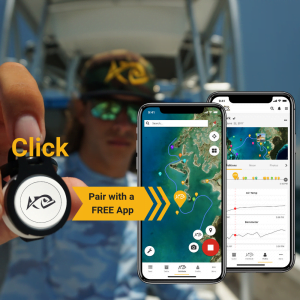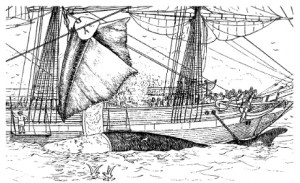Do you wonder how the pros always catch fish on any lake, any time of the year?
Time on the water, experiencing multiple different scenarios, then remembering each scenario and applying it to a similar situation, is the key. The problem is … most people can’t spend 300 days a year on the water. Things like work, family, chores, and ton of other things get in the way of an everyday fishing life. And if we’re being completely honest, for a majority of the angling population, remembering what happened the last time out on the water when facing similar conditions just doesn’t happen all that frequently.
But what if there was a tool that could make all that so much easier?
Before we share that tool, let’s talk about a fishing logbook, because it’s the key.
By Derek Horner
A fishing logbook is exactly what the name implies: a journal for you to record important information about your outings. While most fishermen claim that they can remember what fish they caught, when, and on what lake (do you really?), the whole truth of the matter is that there’s no way you can remember every single detail about every single catch. Sure, you’re able to recount how big it was, and remember bragging to your fishing buddies on Facebook, but the finite details slip by the wayside.
Three months ago you had a great day on the water, but can you recall? …
- What the barometric pressure was
- What phase the moon was in
- What your GPS coordinates were
- What the weather was like
- The direction(s) of the wind, if there was any
- How deep the fish were
- The bait you were using
- Your presentation(s)
- Whether or not you saved your GPS trail
- Can’t remember? Yup. That’s what we thought.
That’s why using a logbook is so advantageous. It allows you to record all of the truly important information so that weeks, months, or years later you can go back to the same spot, replicate those exact same circumstances (to the best of your ability), and have just as much success. A logbook will hopefully help you notice patterns in fish movements and behavior related to conditions, time of day and year, feeding patterns, and more. It’s akin to a football coach’s playbook.
With a fishing logbook, you can notate the details that coincide with your catches and misses. Having access to these historical data and tidbits of specific information can help improve your fishing.
Using a logbook can help make you a better fisherman. It could be just a standard notebook, or there are a variety of commercially available angler’s logs you can easily get your hands on at bookstores and online retailers. There are also a wide variety of ever-evolving apps that make excellent journal entries for you.
How much information you want to log into your journal is up to you, but the more you include, the more it will help you in the future. Typical information includes:
- Date
- Site
- GPS coordinates
- Weather (wind direction and speed)
- Temperature
- Barometric pressure
- Moon data
- Water temperature
- Water clarity
- Tide
- Lake level
- What depth you fished (and caught)
- Lure description (size, type, color, presentation)
- How you fished
- Description of catches (number and size)
- Anything else that might be helpful to you down the road
 Where Did the Fishing Logbook Come From?
Where Did the Fishing Logbook Come From?
Fishermen have been logging their data for centuries, leaving behind glimpses into the stories that shaped the open waters.
Modern fisheries have only been seriously keeping track of marine populations for the past 30 to 40 years. Thus, modern day researchers are using these archival fishing journals to piece together what’s been happening to marine life. One account written in Sicily in 1153 described North Atlantic aquatic life as being so abundant that islanders built their homes and tools from the bones of marine animals.
Historically, ship skippers kept fishing logbooks for their own information. Because no one else read them, there was no need to alter the facts of the day’s catch. Fishing logbooks are now used in the commercial fishing industry to record catch data as a part of the fishery’s regulations. This information is then submitted to the fishing authorities of the vessel’s flag state. As a result, a lot of modern commercial records have been falsified or skewed.
No one is sure when recreational anglers started keeping their own records, but it stands to reason that it is an age-old tradition, born of the desire to be able to repeat tales of conquest and to pattern fish for future reference.
Can it Get Any Easier to Keep a Fishing Logbook?
 It sure can! Remember we mentioned fishing apps? Yup.
It sure can! Remember we mentioned fishing apps? Yup.
I’d like to introduce you to the ANGLR app. ANGLR gives you the ability to log all of that data seamlessly and automatically with the touch of a button.
The ANGLR app tracks details such as your GPS path, weather, and water data automatically while you fish. The app is free to install and use. However, paired with the optional Bullseye, with the click of a button you can pinpoint where you caught your fish or drop a waypoint. Once a fish is marked, you can notate your presentation, size of the fish, lure used, and species. Additional notes about the catch can be made either right then and there or edited later. You’re even able to attach pictures to each location, catch, or both.
Once you’re home, all you have to do is log in to your free account at ANGLR.com to look up your trips, edit your catches, and detect predictable patterns as they begin to emerge.
Give it a try!
Looking for more stories like this? Check out ANGLR Resources


